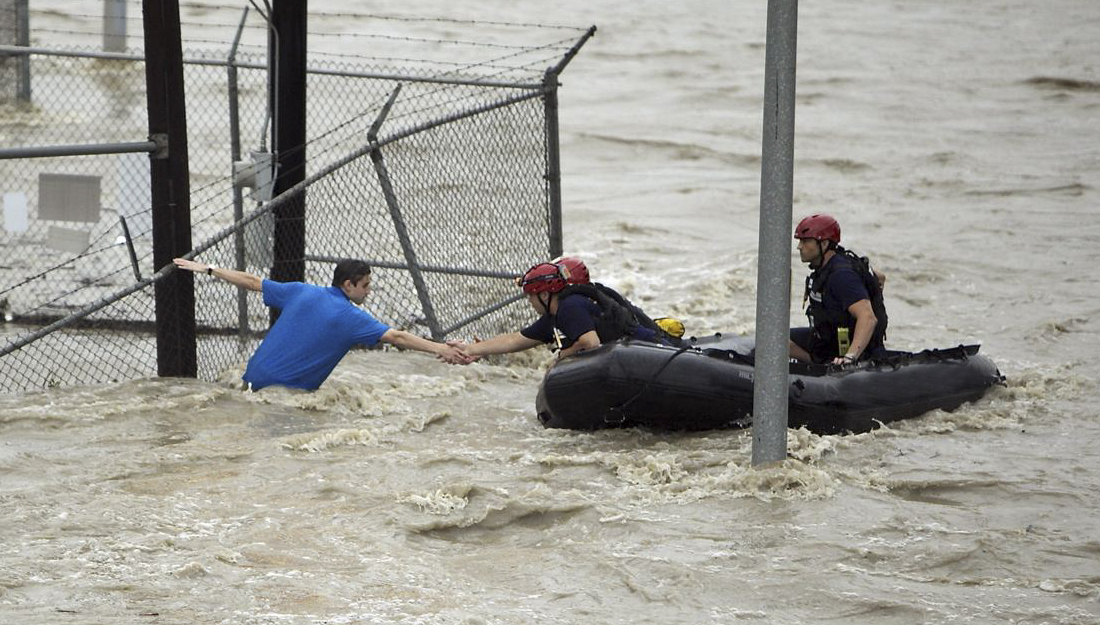Swift study: Researching flash flood rescues in Texas

Floods are the most common natural disaster in the world, and for the 27 counties of Texas’ so-called Flash Flood Alley, sudden floods are a continual threat. Jennifer Horney, PhD, interim head and associate professor in the Department of Epidemiology and Biostatistics at the School of Public Health, will be presenting the results of her research on the instances of swift water rescues in Texas at a National Weather Service webinar.
Horney and her colleagues recently published research examining flooding fatalities and rescues from 2005 to 2014 to discover patterns that could guide future research and help public safety efforts.
“Despite the dangers, many people, still unaware of the flash floods pose, put themselves into dangerous situations by driving or walking into floodwaters,” Horney said. “Rainfall events of the type that cause flash floods are difficult to predict, but extreme rainfall has become more frequent since 1991, and future climate change could increase the frequency and severity of storms and flooding. In addition, Texas’ population is projected to double by 2050, exposing more people to the risks of flooding and bringing land cover and land use changes, such as paved surfaces, that could further exacerbate the problem.”
During flash floods, first responders often find themselves engaging in what are called swift water rescues, which involve floodwaters moving faster than 1 knot (approximately 1.2 miles per hour). The study was conducted with the Texas Department of State Health Services as part of an EpiAssist project, a service-learning program created by Horney that partners graduate students with health departments and agencies. In the study, published in the journal Climate Risk Management, lead author Vaidehi Shah, a former Master of Public Health student now with the Waco-McClennan County Public Health District, Horney and their colleagues analyzed swift water rescue data from Texas Fire Marshal’s Office along with U.S. census population information and data on flood fatalities from the National Oceanic and Atmospheric Administration.
During the 2005 to 2014 reporting period, there were more than 3,000 swift water rescues in Texas. Half of these were in the Flash Flood Alley counties and about 86 percent occurred in urban counties. The yearly numbers of rescues varied widely, with the most happening in 2007 and the fewest in 2011. The number of rescues roughly coincided with yearly precipitation totals.
“The sheer number of rescues required for people walking or driving into floodwaters points to a need to better inform the public about flash flooding risks,” Shah said.
Previous studies have found that more than half of drivers have driven on flooded roadways because they did not think doing so would be unsafe, and drivers of trucks and similar vehicles have been found to drive in floodwaters more frequently than other drivers. Future public education efforts such as permanent signs and social media messages may help people be more aware of risks.
In addition, the higher rates of swift water rescue in urban areas compared with rural areas points to a need for further research on the differences between these types of settings. Also, more information is needed on demographic factors to determine how best to target education campaigns. Lastly, as Texas’ population grows and becomes more urbanized and as flood frequency increases due to climate and land use factors, swift water rescues may become more common than in the past. This demonstrates a potential need for specialized training and equipment for fire departments that would respond to flood emergencies.
“This study acts as a first step on the road to better understanding the factors involved in flash flood rescues and paves the way toward interdisciplinary studies aimed at finding better ways to educate the public on flood risks and prepare first responders for the future,” Horney said.
To attend the webinar, you will need to register in advance.
Media contact: media@tamu.edu


